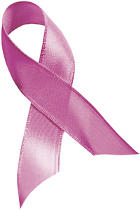October: Breast Cancer Awareness Month
by Paul Arnote (parnote)

October is Breast Cancer Awareness Month. Started 25 years ago as a week-long event to help fill in the information void among the public about breast cancer, it has since evolved into a month-long event. Also, despite October being dubbed as Breast Cancer Awareness Month, efforts continue throughout the year to increase breast cancer awareness and information.
Next to skin cancer, breast cancer is the most common cancer among women in the United States. An estimated 192,370 cases of invasive breast cancer are predicted to be diagnosed this year, with 40,170 deaths from breast cancer expected. Today, there are an estimated 2.5 million survivors of breast cancer, in the United States alone. Of course, worldwide figures are much higher.
Breast cancer is the second leading cause of death from cancer among women, after lung cancer. And if you thought women were the only ones affected by breast cancer, think again. Although it is much more prevalent among women, men can develop breast cancer, too. In fact, although women are 100 times more likely to develop breast cancer than men, an estimated 1,190 men are expected to be diagnosed with invasive breast cancer this year, alone.
Given its prevalence, chances are exceptionally high that your life has been impacted by breast cancer, either personally, or you know someone who has battled breast cancer, or you know someone who has a loved one who has battled breast cancer.
Treatments for breast cancer can include mastectomy (removal of the breast tissue), radiation therapy, chemotherapy, or any combination of the three. The key, of course, is early detection. That early detection comes about by educating the public on the proper way to do self-breast exams, and through routine mammography screenings for those in higher risk groups. The Susan B. Komen Foundation has PDF files, in many different languages, that allow a user to print out a hanging door tag (similar to the "Do Not Disturb" signs in hotels and motels) that details the steps involved in conducting a proper self-breast exam. These exams should be done at least monthly to be effective. You can download the English PDF version of the breast exam door tag here or you can obtain your copy in any one of 12 different languages by visiting:
http://ww5.komen.org/Content.aspx?id=8934. Gone undetected, some breast cancers can spread (metastasize) to other organs in the body, including the lungs, brain, liver, bone, or any number of other organs. This is why early detection is so important. If caught early, it can be treated with a fairly high degree of success and survival rates.
Risk factors for developing breast cancer include, among other things, gender, age, personal history, family history, early menstruation, first pregnancy after the age of 25 or 35, having no children, hormone replacement therapy, and lifestyle choices (diet, activity level, smoking, alcohol intake).
For more information on breast cancer, you can visit:
http://www.nbcam.org/index.cfm or
http://ww5.komen.org/default.aspx.